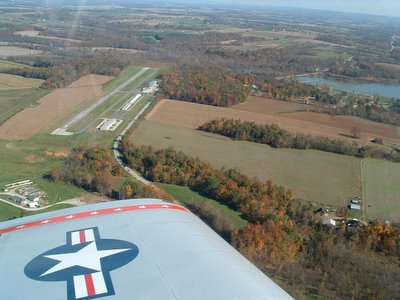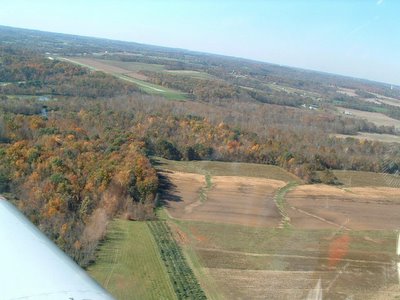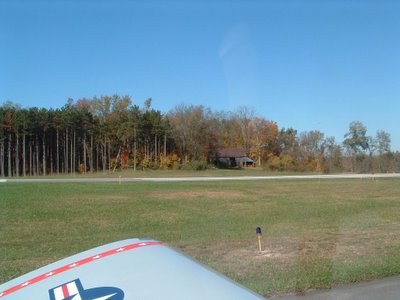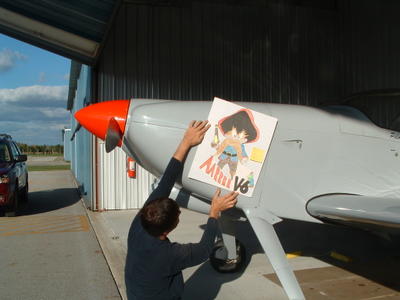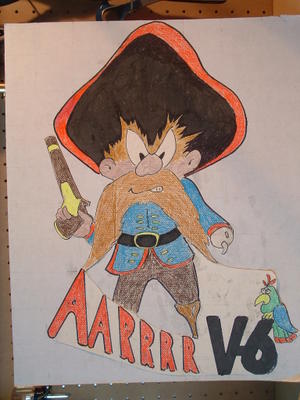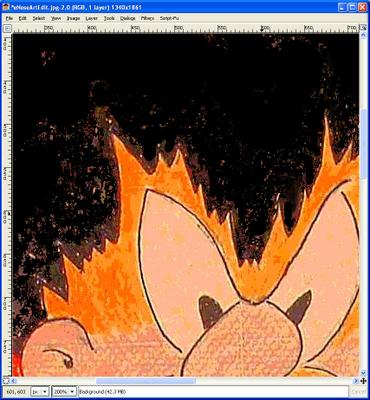There's been a lot of re-paving and other construction work at Bolton over the last couple of weeks. They've got a lot of the old pavement removed, so there are sharp bumps and a lot of loose gravel lying around. It's keeping me from flying!
I did break down and order a wing jack, which arrived yesterday. I can get going on my tire changes as soon as I get some free time.
Somoeone was asking me about maintenance, and how much I can do myself since I didn't build the plane and don't have a repairman's certificate. The FAA regulations are pretty clear on this topic.
The pertinent rules for what the FAA calls preventative maintenance are in Part 43 of the regs. In Appendix A of Part 43, the FAA explicitly details what maintenance items can be performed by an aircraft owner, whether the aircraft is a factory-built certificated model or a homebuilt experimental like mine. The same appendix lists items that are considered major alterations/repairs, which entail a completely different set of requirements.
Needless to say, I have absolutely no desire to dabble in the major alterations/repairs category - should anything arise that requires that level of work, I will be hiring a licensed mechanic to perform the job. It's not that I can't legally do them, it's just that they are flagged as 'major' for a reason and I'd be much more comfortable having a professional mechanic involved. Anything having to do with the engine other than routine maintenance, for example, is something I will hire a mechanic for.
The list of allowable preventative maintenance items includes things like tire changes, oil changes, cleaning and greasing wheel bearings, upholstery work, repair/replacement of non-structural fairings, light bulb replacement, cleaning/gapping/replacing spark plugs, and servicing/replacement of batteries. Note that these are things that can be performed on any airplane, as long as the person doing the work is a licensed pilot and a registered owner of the aircraft. This is the rule that allowed me to do oil changes on the Tampico.
The interesting thing about Part 43 to an owner of an Experimental plane is that one of the very first things it says is that the rules don't apply. This is a quote from the EAA (Experimental Aircraft Association) web site:
FAR Part 43 specifically states that the rules of that part do not apply to experimental, amateur-built aircraft. Therefore, any work (not just maintenance) on an experimental aircraft can be performed virtually by anyone regardless of credentials. (This does not apply to the condition inspection). Let common sense be your guide as to what maintenance you conduct yourself.This does not completely absolve responsibility for compliance with certain other requirements such as an annual inspection because those requirements are written into the operating limitations section of the airworthiness certificate by the FAA examiner that approves the plane for flight. For example, my certificate explicitly requires an annual inspection, and it requires that it be done by either the holder of the repairman certificate (the builder) or a licensed A&P (Airframe and Powerplant) mechanic. It looks something like this:
No person shall operate this aircraft unless within the preceding 12 calendar months it has had a condition inspection performed in accordance with the scope and detail of appendix D to part 43, or other FAA-approved programs, and found to be in a condition for safe operation. This inspection will be recorded in the aircraft maintenance records. Condition inspections shall be recorded in the aircraft maintenance records showing the following or a similarly worded statement: "I certify that this aircraft has been inspected on (insert date) in accordance with the scope and detail of appendix D to part 43 and found to be in a condition for safe operation." The entry will include the aircraft total time in service, and the name, signature, certificate number, and type of certificate held by the person performing the inspection.There are other similar clauses in my operating limitations. One, for example, states that if I want to fly the plane IFR I have to get the same two-year inspection on the pitot-static system that a factory built plane (like the Tampico) is required to have. They're all pretty much common sense, and are very easy to live by. As you might expect, they concern themselves primarily with things that could create problems for other people, like the IFR equipment inspection. No one wants a 747 to fly into an RV-6 because the RV-6 was reporting an incorrect altitude. Other than things that affect public safety, the FAA is pretty content to let us do whatever we want. For some people, that means building an entire airplane in their garage. For others, like me for example, it means I can do the things I'm comfortable with, but defer the more complicated jobs to professionals. It's a pretty good deal.
